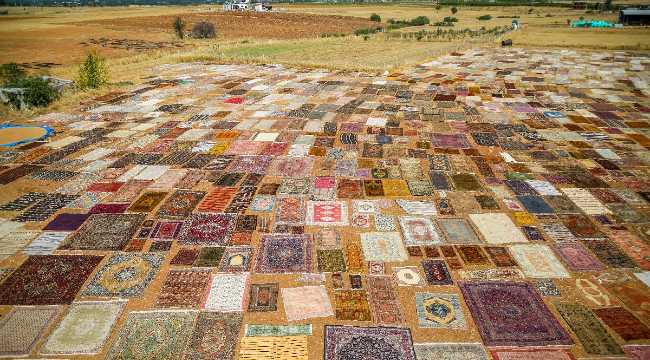Tradition of carpet weaving in Turkey dating back to tribes in Central Asia

The tradition of carpet weaving in Turkey has a rich history that dates back to the nomadic tribes of Central Asia, where the Turks originated. These nomads wove various woolen textiles for their migratory lifestyles, including tents, rugs, kilims, felts, and more, using materials from their animals. As Turks migrated westward, they brought their carpet weaving tradition with them, adapting their designs to reflect their new environments and local influences.
The Pazyryk rug, dating back to the 3rd-5th century B.C.E., is one of the earliest known carpets and was discovered in the Altai Mountains. Over time, the Seljuk carpets emerged in Anatolia, known for their large dimensions, symmetrical knots, and geometric designs. Carpets in Anatolia continued to evolve, featuring not only geometric motifs but also human and animal figures, reflecting influences from various cultures.
CARPET WEAVING REACHES NEW HEIGHTS WITH OTTOMANS
With the arrival of the Ottoman Empire, carpet weaving reached new heights. Ottoman sultans commissioned large carpets for mosques, leading to the creation of more intricate and sophisticated designs. Carpets became essential items of commerce and were often presented as diplomatic gifts. The Westernization movements in the 19th century brought changes to the industry, including the use of Western technology and the emergence of factory-produced carpets.

During the late 19th and early 20th centuries, the Oriental Carpet Manufacturers Company played a significant role in carpet production in Western Anatolia. After the fall of the Ottoman Empire, the industry was redeveloped in the new Republic of Turkey.
CARPET WEAVING CONTINUES IN SOME ANATOLIAN VILLAGES TODAY
Today, carpet weaving continues in Anatolian villages, although the number of carpets being made has decreased. The DOBAG project, which uses natural plant dyes and traditional Turkish motifs, has been a successful endeavor in preserving and revitalizing Turkish weaving traditions. Furthermore, the Cultural Heritage Preservation and Natural Dyes Laboratory (DATU) has made significant contributions to the preservation and understanding of historical Turkish carpets through analytical services and field studies.





